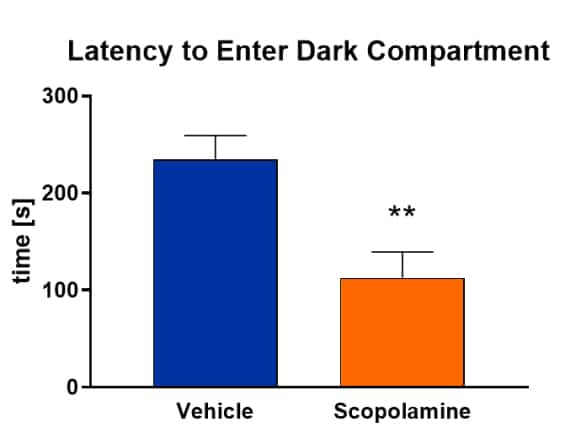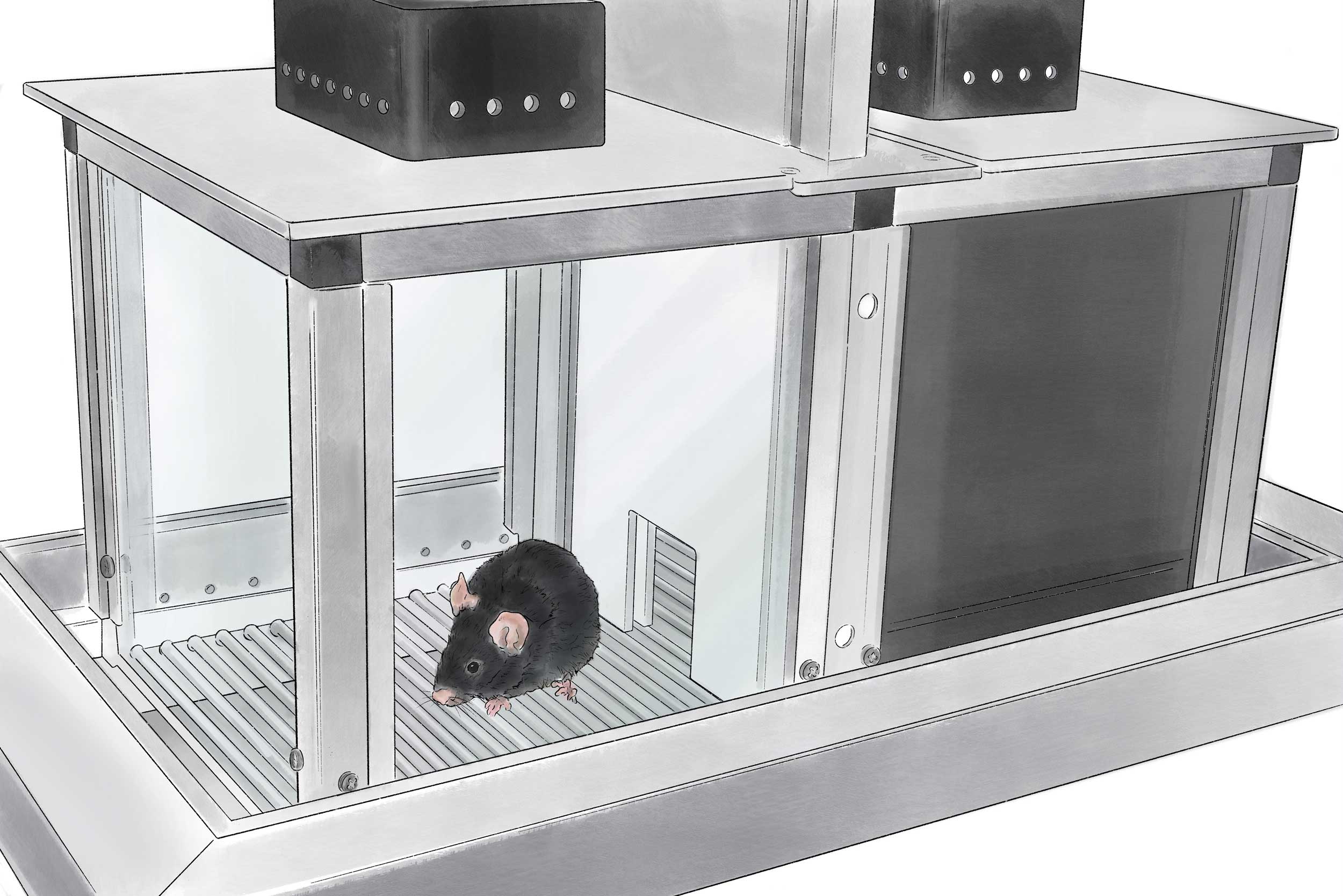The passive avoidance test is a behavioral assay aiming at measuring long-term memory and emotional learning in rodents.
The passive avoidance apparatus consists of a brightly lit and a dark compartment, that are separated by a sliding door. The test is based on negative reinforcement and the animals learn to refrain from stepping through a door to an apparently safer dark chamber although they were previously punished in this chamber.
During the acquisition phase, the brightly lit and the dark compartments are separated by the sliding door. The rodents are placed into the illuminated chamber of the apparatus and are allowed to freely explore the novel arena. After a defined period, the sliding door opens, and rodents are allowed to enter the dark compartment. Upon entering to the dark compartment, the sliding door automatically closes, and a mild electrical foot-shock is administered. Hence, the animals learn to associate the dark compartment of the apparatus with an aversive experience. To evaluate memory formation and retrieval, the retention test is performed 24 hours after the acquisition phase. The animals are placed back into the illuminated compartment of the arena, while the sliding door is open, allowing the animals to visit the dark compartment, previously associated with an aversive experience. The time until the animal visits the dark chamber (latency) is measured and serves as an index of emotional memory. All parameters are measured using an automated tracking system.
The passive avoidance test represents a fast and a reliable method that can be utilized to evaluate the impact of genetic alterations or pharmacological agents, such as scopolamine administration, on emotional learning. Results obtained in the passive avoidance test can be further validated in the Fear condition test, while other forms of memory, such as spatial memory can be measured in the Y-maze and Morris water maze test.


Figure: Passive avoidance test in male scopolamine-treated Sprague Dawley rats at the age of 10 weeks. Animals were treated once with 1 mg/kg scopolamine. n = 14 per group. Mean + SEM. Mann-Whitney U-test; **p<0.001.
